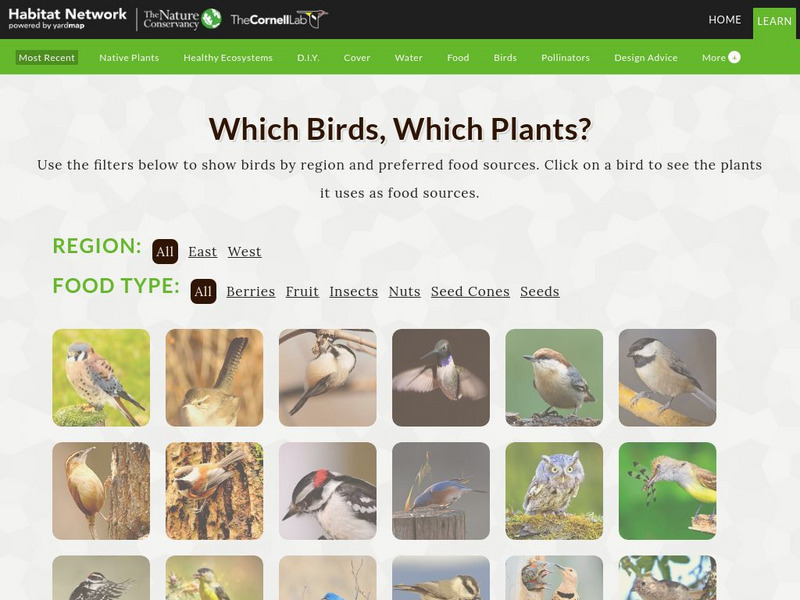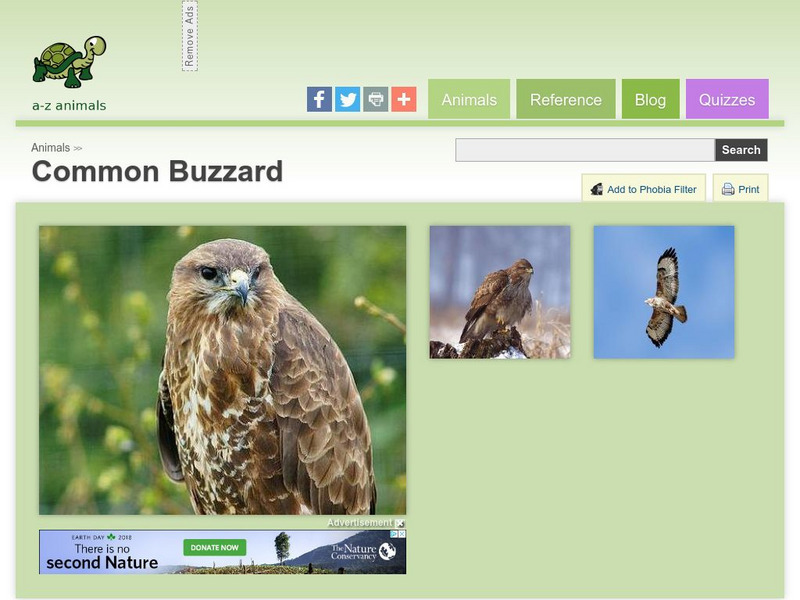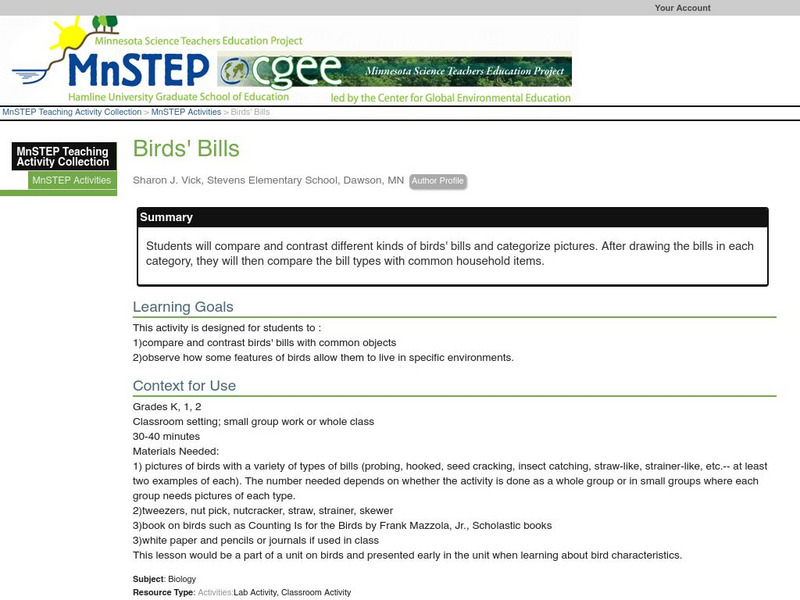Curated OER
America Responds to Terrorism
Students discuss truths and myths dealing with the subject of terrorism.
Curated OER
Motte Rimrock Reserve: Lesson Plan for Flora
Learners study the flora of Motte Rimrock Reserve while observing organisms in their natural environment. They use a dichotomous key to identify plants.
Curated OER
A Tale of Two Reactors
Tenth graders role-play as members of the food chain. Sticky tables acting as polluting factors are introduced and members of different trophic levels suffer varying degrees of damage due to those pollutants.
Curated OER
Meet a Creature From Ancient China
Young scholars view an image of a Chinese chimera and complete a chart describing what they see and understand about the creature. They compare funerary customs today to those of ancient China. They compile a list of items that might be...
Curated OER
Analysing Scientific Explanations for Megafauna Extinction
Students compare explanations for Australian's megafauna extinctions and identify reasons for popular acceptance of certain scientific explanations. They debate and analyze scientific explanations.
Curated OER
Catch As Catch Can
Pupils capture and observe insects. Using provided netting, students design and create a butterfly net. They study many types of insects and their benefits. After identifying insects caught, pupils complete a graph. Students write...
Curated OER
Investigate Factors Affecting Nitrates in Groundwater
High schoolers participate in an experiment in which they investigate the factors affecting the levels of nitrates in groundwater. Using examples, they explain the nitrogen cycle and identify the sources of chemical nitrogen...
Curated OER
Spelling Words Puzzle II
Students receive instruction using examples to find missing letters in their spelling words. They fill in the blanks of each spelling word choosing from a list of animal names provided.
Curated OER
Aaa, Alligators!!!
Students are introduced to different words that have the /a/ sound in them. They think of their own words that contain the sound and practice making the letter "a" on primary writing paper. Students who have formed the letter correctly...
Curated OER
Dinosaur History (Part 1)
Students explore and interpret scientific data through a Biblical world view. They discuss scientific dating methods of dinosaur bones. Students compare and contrast Biblical and evolutionary views.
Curated OER
Adopt-A-Tree Certificate
In this adopt-a-tree certificate worksheet, students choose a tree and complete 3 observation questions as well as conduct some height and circumference calculations.
Curated OER
Celebrating Thanksgiving
In this Thanksgiving worksheet, students use 18 clues given at the bottom of the page to solve a Thanksgiving Day crossword puzzle.
Curated OER
Catch as Catch Can
Students investigate insects. In this insect analysis lesson, students catch insects using nets they make. They identify the insects they catch and create a chart to show the numbers and varieties. This lesson includes a vocabulary list...
Curated OER
Animal Poetry
For this animal poetry worksheet, students gather information about an animal and follow a sample to write an animal poem. Page has links to additional activities.
Curated OER
Arabian Horses
In this online quiz worksheet, students answer a set of multiple choice trivia questions about Arabian horses. Page has a link to answers.
McGill University
Birds of Quebec
Canada's province of Quebec is home to over two hundred different species of nesting birds. The Redpath Museum's Quebec Biodiversity Website has an excellent selection of bird species that can be commonly found in the province. Pictures...
Earth Life
The Amazing World of Birds
This site is all about birds! Read facts on birds and discover which bird is the rarest, which is most common, and smallest and largest. There are also several links for other pages on birds.
PBS
Pbs: The Life of Birds
Online companion to the PBS program "The Life of Birds." In-depth look at certain behaviors of birds, the evolution of birds, birds as parents, and bird songs.
Cornell Lab of Ornithology
Habitat Network: Which Birds, Which Plants?
A visual bird identification tool that gives the feeding information of thirty common birds in America.
Earth Life
Earth Life Web: Extinction in Birds
This site, which is provided for by Earth-Life Web, gives a list of extinct birds and provides a brief description and dates of extinction.
A-Z Animals
A Z Animals: Animal Facts: Common Buzzard (Buteo Buteo)
Explore images and facts about the Common Buzzard, including details on its appearance, habitat, predatory lifestyle, behaviour, and much more.
National Institutes of Health
National Institute of Health: Matching Game for Niehs Birds!
See if you can figure out what different birds eat. This interactive matching game explores the diets of 17 birds commonly found in the US.
Science Education Resource Center at Carleton College
Serc: Birds' Bills
Students will compare and contrast different kinds of birds' bills and categorize pictures. After drawing the bills in each category, they will then compare the bill types with common household items.
Other
Nature Worldwide: Birds of Panama
Here you will find an extensive list of the birds found in Panama. They are listed by their species name, the common name, and where they are found.
Other popular searches
- Common Birds Life Cycle
- Common Birds Nesting Habits
- Common Birds Songs
- Worksheets on Common Birds
- Common Birds Migration
- Wordsearch on Common Birds
- Word Search on Common Birds























